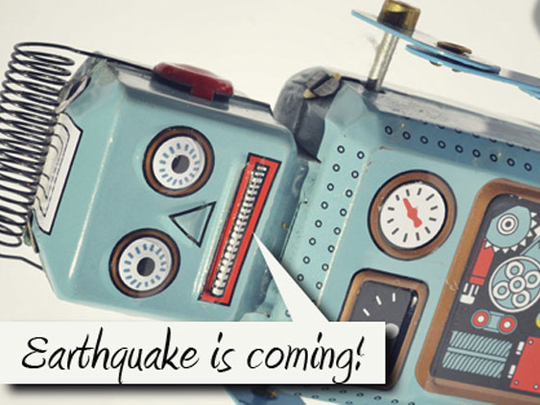
It is not science fiction, but the Los Angeles Times was first to break news of a 4.4 magnitude earthquake on the Richter scale last week and did so courtesy a “robot journalist”.
Ken Schwencke, a Los Angeles Times journalist and programmer, created an algorithm that generates a short article when an earthquake happens. That Monday, immediately after the first termor at 6.25am, he saw the news was already written up and only awaiting his approval to be published.
Schwencke reviewed the text and pressed the “publish” button. LA Times thus became the first newspaper to report the tremor and all thanks to a robot.
The true author is an algorithm called Quakebot, which extracts information from the US Geological Survey.
According with Ben Welsh, a database producer at LA Times, “Algorithms can help you find and report the news. You can write code that will ask and answer the common questions that a reporter would ask when looking at that same data set.”
The newspaper’s homicide report releases details gleaned from the Los Angeles County coroner’s office. While journalists copy and paste, robots have already written out the first sentence and published it on the Homicide Report blog. “Part of that is automated and part human,” Welsh said.
Algorithms and robots are a reality and publications are using them. Forbes.com uses an artificial intelligence platform provided by the tech company Narrative Science to generate automated news. The Guardian’s ‘The Long Good Read’ is a collection of longform features selected and laid out with the help of an algorithms robot.
It is amazing what technology can create and we are only in the beginning. The bad news is that some professions in the future will be completely extinct.
A study by Carl Benedikt Frey and Michael A. Osborne from Oxford University researched the vulnerability of jobs to automation. They used detailed description of 702 different occupations to create a statistical model to demonstrate which of them are more — or less — susceptible to robot substitution.
The conclusion is that 47 per cent of US jobs can now be done by machines rather than humans. Therefore these professions have a high risk of disappearing in the next 10 to 20 years; 19 per cent are rated medium-risk and 33 per cent low risk.
Among professions at risk of disappearing are of a telemarketing operator, documents researcher, seamstress, mathematical technician, insurance broker, watchmaker, packers and librarian.










